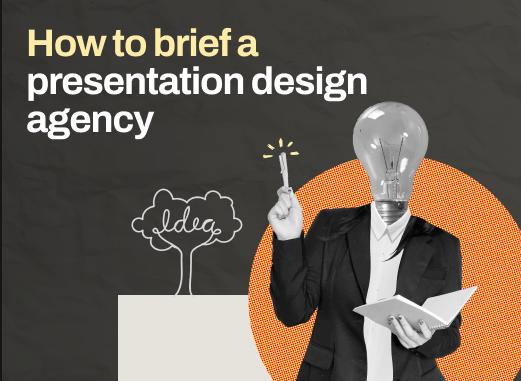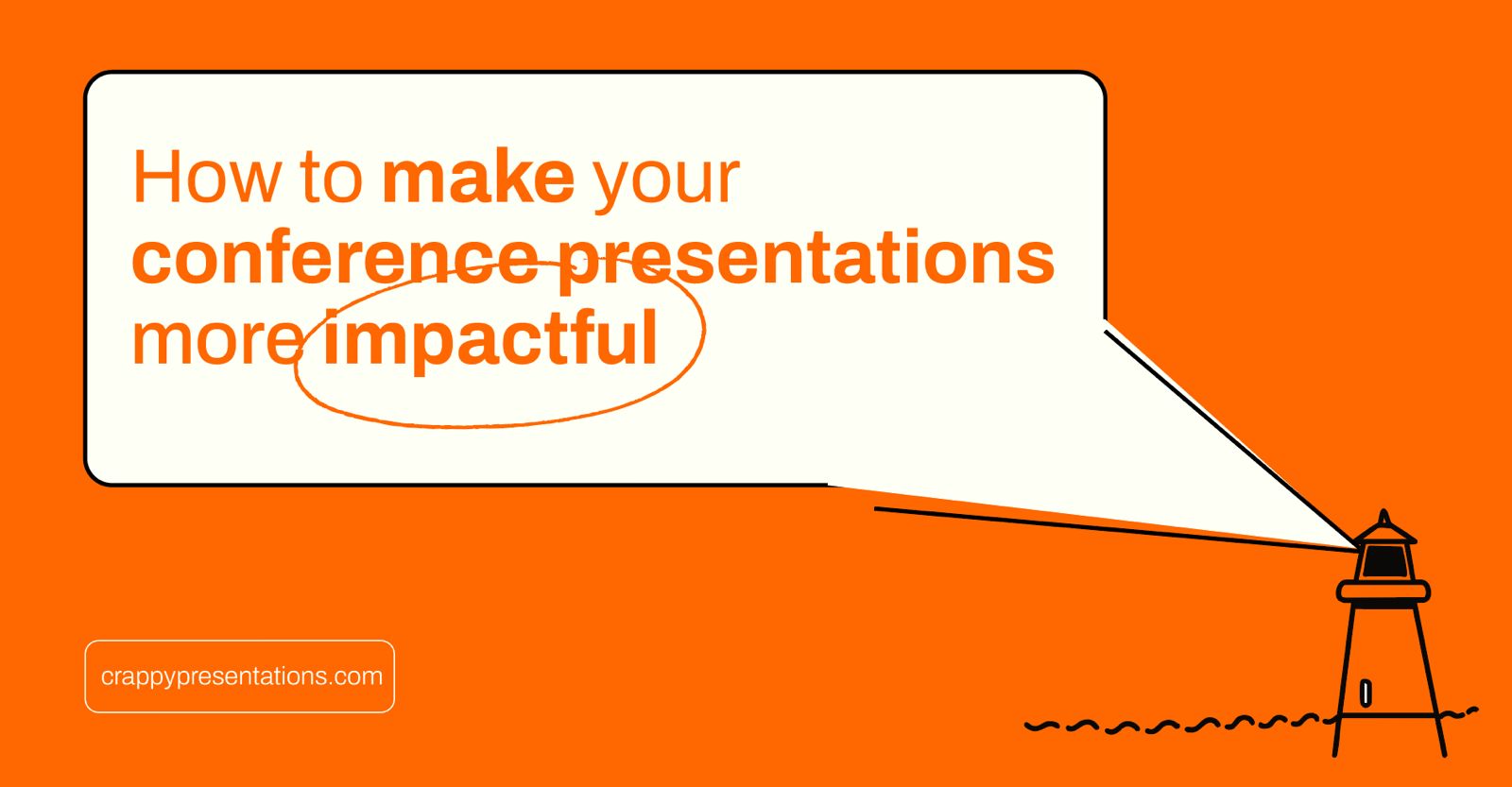We’ve designed hundreds of decks, investor pitches, brand narratives, internal strategy presentations, sales decks, keynote stories, and there’s one pattern we see over and over again: the quality of the brief shapes the quality of the outcome.
When clients come to us saying, “We’re not sure what to include in the brief,” or “We’ll just send the content and let you handle the rest,” we know what’s coming next: rounds of feedback, last-minute rewrites and redesign requests.
Whether you’re a startup founder preparing for an investor pitch deck, or a large organization briefing your internal communications team, this is your playbook to brief a presentation design agency effectively. A clear, thoughtful brief can help a presentation design agency provide you with a strategic asset, however, A vague or incomplete one can turn timelines chaotic, visuals inconsistent, and messaging off-track.
Let's get into the specifics.
What is a design brief?
Think of a design brief as your north star, be it for presentations or any other requirement you have. It is the bridge between your ideas and the designer’s output. Coming to the context of a presentation design brief, a good one answers three foundational questions:
1. What’s the goal?
Are you trying to inspire, persuade, educate, or sell? A sales presentation and a TED-style talk need very different decisions from pacing and tone to typography and color balance. (Related read: A beginners guide to TEDx presentations)
2. Who’s your audience?
A deck for a boardroom full of analysts differs wildly from one meant for a brand partnership. When we know who your audience is, their familiarity with your content, their priorities, their pain points, we can build a narrative that resonates with them.
3. What are the KPIs?
A brief that says “We want a presentation that looks good” isn’t wrong, but it’s incomplete. Success might mean “We want investors to immediately understand our value proposition within three slides” or “We want to align 200 employees around a new brand story.” When you define success metrics, your agency can engineer the creative and content strategy around it.
Why a good project briefing makes all the difference?
A well-communicated brief saves time, reduces rework, and helps build creative alignment between you and the agency. Here’s what happens inside an agency when a brief lands in our inbox:
- The strategy team reads it to understand the narrative direction, what problem the deck is solving and how the content should flow.
- The designers read it for tone, visual references, and constraints, colour systems, brand assets, preferred formats.
- The project manager reads it to structure timelines, checkpoints, and feedback loops.
If your brief lacks clarity, each of those roles fills in the gaps differently, and the result is often misalignment disguised as creativity.
Related read: 7 ways a presentation design agency manages your project
A detailed and well communicated presentation brief saves at-least 3–4 unnecessary revision rounds, cuts delivery time in half, and gives the design team room to focus on storytelling rather than guesswork. That’s why briefing well isn’t about overloading your agency with information that you have or want in your presentation, but it’s about giving them the entire context to help them understand your requirements better.
What to include in your presentation design brief
Here’s where most clients under-brief.
They send slides, copy, or data. As an agency, what we actually need is context, the kind that informs structure, pacing, and design intent.
Let’s break it down.
1. Project Overview
Explain your company, product, or initiative in two or three clear paragraphs.
We don’t need your entire brand manual, just enough to understand your voice, positioning, and what sets you apart.
Include your existing brand guidelines, logo files, and any recent presentations you liked (even if they’re not yours). They give us a sense of visual direction.
2. Objective and Purpose
Every great deck starts with a goal.
Are you trying to:
- Win investors?
- Align your internal teams?
- Educate customers?
- Sell a product?
Different goals call for different presentation structures. For instance, our blog on 10 different types of presentations shows how each type has its own set of requirements. When you’re clear about the objective, we can adapt design and flow accordingly.
3. Audience Insight
Who are you presenting to? Their expectations, knowledge level, and attention span define your deck’s tone and complexity. Executives might prefer data-driven brevity, while customers might need emotion and simplicity.
Include details such as:
- Demographics and roles
- What they already know
- What motivates them
- What objections they might have
The more we know about your audience, the more your presentation speaks their language.
4. Content and Key Messages
Let us know what’s the one takeaway each slide must have. If your content isn’t fully ready, even a rough outline helps us shape the narrative. Our strategy team often helps refine messaging through narrative building and content structure, ensuring every design choice supports the key message.
You can also learn more about creating an effective presentation outline in our blog.
5. Design Style and References
We love being creative and experimenting with design, however, to avoid a subjective chaos, agencies expect clients to include these points in the presentation brief:
- Brand color codes, fonts, or imagery preferences
- Examples of decks or visuals you like (and why)
- Notes on tone- corporate, playful, minimalist, premium
This helps them match visual tone to your brand personality.
6. Deliverables and Format
While sharing the design brief with your presentation design agency, always specify these things:
- Number of slides
- Output formats (PPT, Google Slides, PDF)
- Any interactive or animated elements
- Print vs. digital use
7. Timeline and Milestones
Every project benefits from clarity on:
- Kick-off and first draft expectations
- Review checkpoints
- Final delivery deadline
When agencies have these upfront, they can plan resources and ensure you never miss an event or investor meeting.
8. Budget and Scope
A transparent budget doesn’t restrict the creativity presentation designers add into your presentations. Knowing your range helps them recommend the right level of design depth, motion work, and revisions.
9. Feedback and Approval Process
Define who gives feedback, and how many review rounds are allowed. This prevents overlapping comments and scope creep.
Let us give you a pro tip here- Nominate one decision-maker to consolidate internal feedback before it reaches the agency. This has personally helped us work smoothly with our clients and deliver the expected outcomes.
Questions to ask your presentation design agency
A good brief doesn’t end at what you tell the agency. It’s also about what you ask them. When clients ask smart, strategic questions, it helps design agencies understand how best to collaborate and align expectations early. Here are some questions you should always ask before or while briefing your presentation design agency:
1. What do you need from me before you start?
Every agency works differently.
Some require finalized content; others (like us) can help refine messaging and flow during the design phase. Clarifying this upfront ensures your timeline isn’t held up waiting for missing information.
2. What’s your review and revision process like?
This helps you understand when to give feedback and how to structure it. The best agencies set up milestone reviews, concept, first draft, final polish, rather than waiting till the end.
That’s how we work at Crappy presentations too, ensuring you see progress early and shape it in a collaborative manner.
3. Can you adapt our presentation for multiple formats or audiences?
If you’ll be using the deck across contexts (e.g., investors, customers, etc.), mention that early on. A good presentation design agency can design a modular presentation that’s flexible enough to be reused and repurposed without breaking design integrity.
4. How do you ensure brand consistency across slides?
Ask how the team uses brand guides, grids, and master templates (if you have any). Some agencies also offer custom presentation template service, creating a slide system that ensures your future presentations stay consistent long after our project ends.
5. What’s the typical turnaround time?
Depending on complexity, deck projects can range from a few days to several weeks. Asking this helps you set realistic expectations and align your internal approvals accordingly.
6. Can you handle animations or interactive elements?
If you’re planning a live or digital-first event, interactivity can transform engagement, so this question can help you choose the right presentations agency as per your presentation requirement.
Explore our blog on a guide to creating interactive presentations to understand when and how to use interactive elements effectively.
Common mistakes to avoid when briefing a presentation design agency
After years of working with brands across industries, we’ve seen a few patterns that derail projects. Here are the most common briefing mistakes you should avoid:
1. Sending content without context
You’d be surprised how often we receive raw copy or slides with no background. Even the most talented design team can’t fix what they don’t understand.
2. Overloading the brief with unnecessary data
A 10-page brief filled with irrelevant details can confuse more than it clarifies.
Instead, focus on clarity, not volume, giving the right information, not all the information.
3. Skipping brand assets or guidelines
If your brand already has visual standards, logo placement, color rules, tone of voice, share them upfront. This helps design agencies maintain consistency and saves redesign time later.
4. Assuming the agency will “figure it out”
Good design depends on direction. If you have a specific requirement for the deck, for example you need one that feels premium, playful, minimal, or corporate, say it. Otherwise, the team of designers will experiment broadly which means longer revisions and mixed expectations.
5. Giving scattered feedback
Avoid sending multiple, conflicting notes from different team members. Structured and timely feedback keeps the project efficient and the output cohesive.
6. Ignoring audience perspective
One of the biggest issues presentation design agencies face is the need to design around internal logic rather than audience impact. Your brief should not be about you and your brand alone, it should be framed around “What should my audience think, feel, and do after seeing this?”
7. Not trusting your agency and their expertise
When you’ve hired presentation experts, you need to give them the room to do what they do best. Give thought to the concepts they bring and understand why that concept helps the presentation instead of just iterating it into one that you like.
Wrapping up
A presentation brief is supposed to be the foundation of your collaboration. It defines how your story will be told, how your audience will perceive you, and how efficiently your agency can deliver results. When you invest a few extra hours into creating a thoughtful, insightful brief, you help the agency and yourself and ensure a more likeable outcome out of the project collaboration.
If you’re looking at these design briefing tips because you’ve got a presentation project in mind, Talk to us. Our wide range of presentation design services include corporate presentations, product presentations, investor decks, sales presentations, event presentations and custom template systems.
For more insights, guides and tips on all things presentations, take a look at the Crappy presentations blog.








